There can be few more iconic and instantly recognisable buildings in the world than the Burj Al Arab in Dubai:
A global hub with a futuristic cityscape:
 (image: www.flight2dubai.com)
(image: www.flight2dubai.com)
This fantastical city that has risen up so meteorically out of a barren wasteland is very different to the Dubai I once knew:
Back then it was just a small bustling sea port with a reputation for gold smuggling. It had a tiny population and was a relatively unimportant (but strategically necessary) outpost to the British interest in the area. It was place the world seemed to have forgotten, struggling for survival the on the edge of a vast empty desert: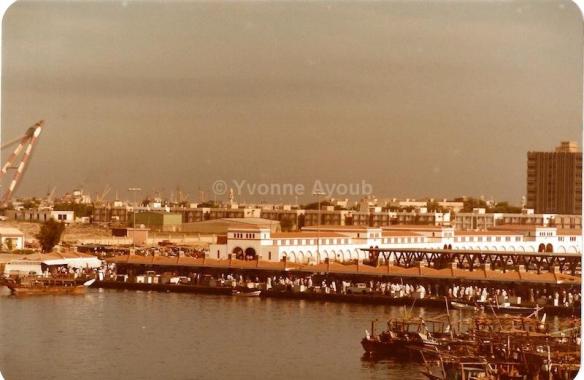
No giant high rises in glass and steel at that time and, mosque minarets aside,
with a few exceptions, the tallest buildings were the abandoned portuguese forts dotted along the coast; relics from the days of piracy and pillaging that had plagued the Gulf for centuries:
At the heart of the Dubai side of the creek stood the old Al Fahidi Fort:
Built over 180 years previously, it had only recently become a museum (in 1971) and its few cannons and ancient dhows on display, ‘moored’ alongside a wooden platform, provided a fitting backdrop for an open air production of Shakespeare’s ‘Merchant of Venice’ in its central courtyard. My role in the masked ball scene was my first of many appearances with the recently formed ‘Dubai Theatre Group’, who regularly entertained the small but enthusiastic expat. community:
and provided the inspiration for this sketch:
(‘Tarantella’, pen & ink drawing © Yvonne Ayoub)
At the approach to Deira side stood a hint of what was to come: a daringly modern new clock tower (which I believe is still there):
But mostly Dubai retained an air of a busy backwater. Having grown up in Bahrain, the way of life, the familiar sounds of the muezzin calling the faithful to prayer, the hot desert winds and the lingering smell of crude oil in the salty air were not unfamiliar to me.
In the old traditional stone houses of the wealthier merchants:
in the Bastakia area of Old Dubai side, air-conditioning was provided naturally by ancient wind towers ( ‘badgeer’) a Persian invention. They effectively harnessed any passing sea breeze, channelling it down through the dark interiors. Water would be sprinkled on the floor beneath the towers and its evaporation, as the air was sucked back up and out, would create a cooling draught throughout the house.
High-built ‘purdah’ walls surrounded each house, providing much-needed shade but also ensuring the privacy of those within (namely the women folk) allowing them to view the world outside, yet remain unseen:
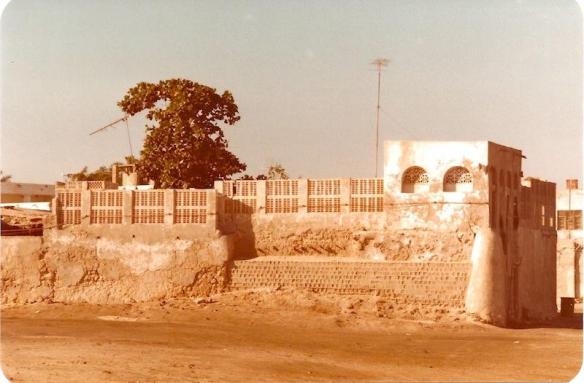
And everywhere bare-footed children played freely in the dusty streets:
along with the freely roaming sheep and goats:
Low built villas housed much of the population but many still lived in the traditional ‘barasti’ (palm frond huts) whose high hand-woven walls, battened together, also allowed for a degree of air circulation. But, being open to the elements from above, they must have provided little respite from the scorching desert heat, high humidity and temperatures that regularly soared well over 40 degrees. Huddled together for shade they were little more than shanty towns devoid of basic utilities – and quite a fire hazard! Once connected to mains electricity, a network of overhead cables appeared, providing power for electric light and air-conditioners and a sea of TV aerials suddenly protruded skywards above them. it wasn’t uncommon to see a few smart Mercedes’ and Datsun trucks parked outside too – along with the tethered camels!.
(drawing by Lee Steen)
This was a world that was about to change – radically. Independence and the discovery of Gulf oil would propel the Emiratis from a humble, harsh existence steeped in time- honoured Bedouin tradition (in one of the most barren and inhospitable places on earth) to the very forefront of the 21st century, bringing with it the excesses of consumerism, capitalism, modern technology and unimaginable luxury. From a single seed to a world-class thriving metropolis – and all within just a few decades!
When I arrived to join my family who had settled there, The U.A.E was barely a year old.
HRH Sheikh Sultan bin Mohammed Al-Qasimi III, Ruler of Sharjah
(with my brother and father far right)
Each state had its strong ruler and a proud, clearly defined tribal identity – and although now ‘united’ they were still fiercely competitive with one another! Perhaps they are still….When Dubai constructed its first state-of-the-art international airport, Sharjah, only a few miles away and not to be outdone, promptly built one of its own!
There was a growing community of mixed origin: Arabs from neighbouring countries, Egyptians, Bahrainis, Iranians and Iraqis. Each brought their skills in education, shipping and trade. Among them were many Lebanese who, anxious to escape the early rumblings of the impending civil war back home, brought not only their professional skills (law, civil engineering and construction) but a touch of Beirut’s glamour and good life too, in the form of good restaurants, stylish boutiques and nightclubs.
In addition were many from the Indian subcontinent whose roles were often in medicine, book-keeping and accountancy as well as trade and commerce. Pakistanis, Baluchis and Bangladeshis provided much of the labour force at that time.
A small American community (oil related) lived quite far out of town further up the coast in Jumeirah (where the Burj Al Arab Hotel now stands) as did a handful of Dutch and French whose primary interests lay across the Gulf in Iran (or Persia as we knew it, as this was still pre-revolution).
There was small British presence too: a handful of Trucial Oman Scouts, left behind to oversee a smooth transition to independence and train the newly formed local defence and police forces, a team from the BBC (to set up the new TV & Radio stations), business consultants and financiers (The British Bank of the Middle East) and the British Council.
The latter employed me to teach English to the wives (Sheikhas) and daughters of two of the ruling families and after mornings spent teaching ballet at the British and American schools, I spent many hours driving through the lonely desert, up and down the empty stretches of the single lane road (newly constructed to link the states) to and from their english lessons.
These were conducted in their newly built palaces:
and gave me a unique insight to the Arab way of life – especially from a woman’s perspective. The women I taught varied in age and education but they were all very gracious and hospitable and, surprisingly given their life of seclusion, extremely savvy and worldly-wise! They were keen to know more of and understand the ways of the west – but understandably wary of embracing them.
Within the indigenous population, the main occupations were in trade:
particularly gold. No sprawling, multi-storey, glitzy shopping malls then! The original old palm-covered souks were a maze of dark narrow alleys, filled with dappled light; lively, aromatic and mysterious places filled with all manner of goods and exotic treasures from the East. Just as they had done for centuries, copper beaters noisily hammering competed with the grain, spice, textile and live-stock traders all shouting their wares, and haggling for the best deals.
(Bedouin, pen & ink drawing © Yvonne Ayoub)
Fishing was also a traditional occupation, providing virtually the only source of locally produced fresh food (the Gulf was rich with fish and seafood) and as a result, boat building was a necessary and still thriving business. Ajman State was where many of the elegant wooden dhows were constructed:
 each section of hardwood, African teak, sawn by hand just as they always had been for centuries:
each section of hardwood, African teak, sawn by hand just as they always had been for centuries:
Dubai creek was filled with these graceful vessels constantly to-ing and fro-ing, transporting bundles of goods and the rapidly growing population of migrant workers from side to side:
There was always an energetic buzz about the city but nothing compared to when the huge cranes, heavy plant machinery and miles of pipeline began to move in;
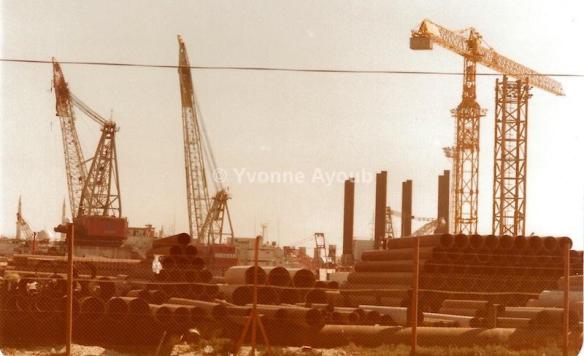 Things were changing before our eyes. Dubai was turning into a giant construction site. Its transformation had begun…..
Things were changing before our eyes. Dubai was turning into a giant construction site. Its transformation had begun…..
I watched it grow for four more years before I eventually left, to continue my Arabian adventure in Saudi – and I’ve never returned since. Awesome and breathtaking as know it is today, I want to hold on to my memory of those special early years when, just like the Old Dubai,
I too was young, ambitious, ready to move on…… embrace the future….and fly…..
Before the earth reclaims what she inevitably will….







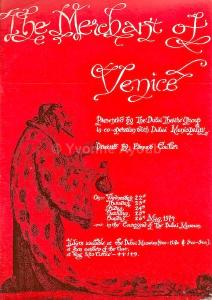



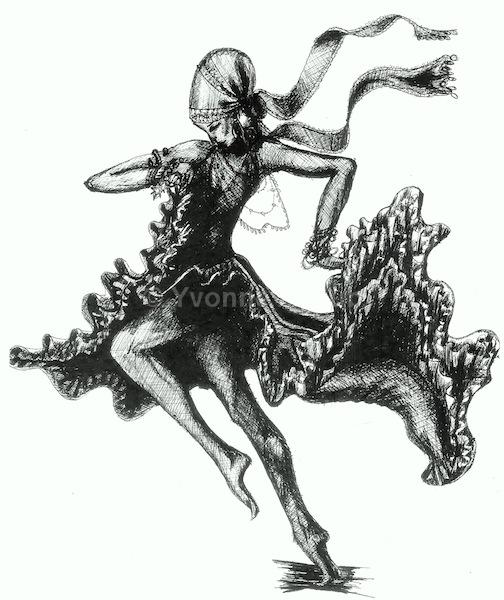


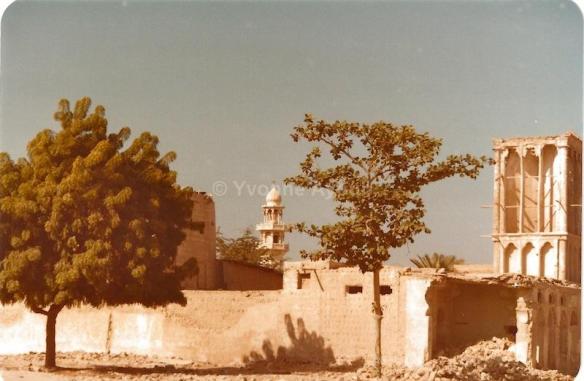







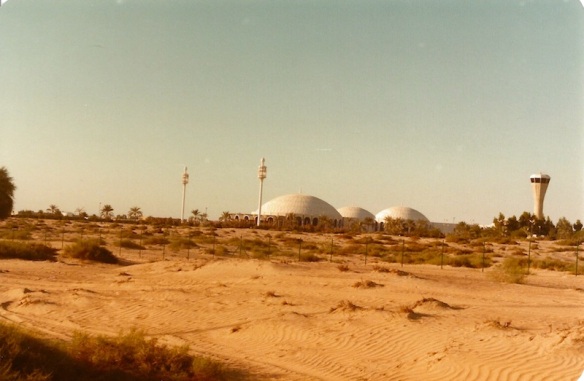



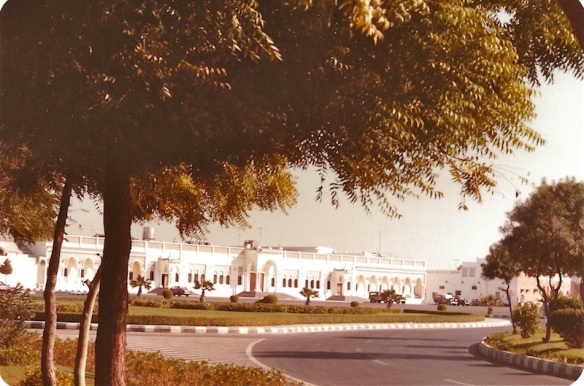

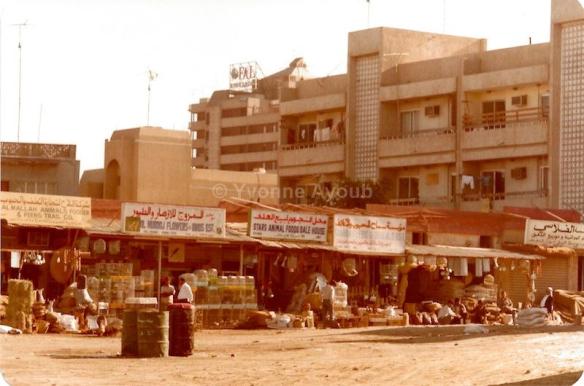
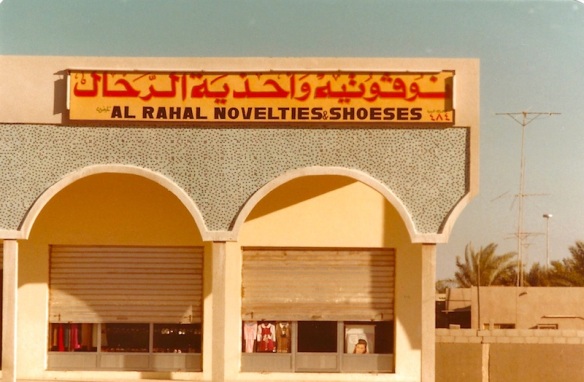






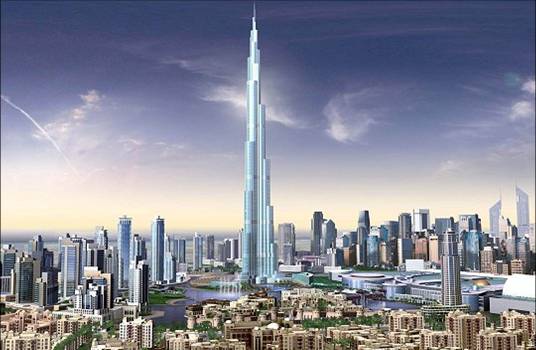

Beautifully written. Thank you. It took me back to the old days. How lovely and simple they were…
LikeLike
Thank you, Helena….Happy Days indeed! I’m so enjoying writing these – all those wonderful memories come flooding back, as if it were yesterday…How lucky we are to have them! Much love, Y xx
LikeLike
Hi Yvonne – having lived in Dubai for over 30 years now, I too have seen many changes (not all for the better!), but loved your entry – all the photos and sketches etc. Is it OK to share it with a group on Facebook “Dubai – the Good old days”? Best Sami (SCocky)
LikeLike
Hi Sami – Lovely to hear from you. Yes, feel free to share….. You’re ears must have been burning; I thought of you so often as I was writing this! Y xx
LikeLike
A very informative story, Yvonne. And I love your art!
Interestingly enough, the idea for my Accidental Spy International Adventure Series came to me in Dubai, on my way to Asia. I even mention Dubai in 2 of the Accidental Spy books.
Cheers,
Lada 🙂
LikeLike
Thank you so much again, Lada! How interesting! I must look them up and read them. So nice to meet you! xx
LikeLike
That pic of Sheikh Sultan – he is accompanied by Andreas Hoeg, owner of Hoeg-Ugland Shipping. We were about to open a Ro-Ro shipping terminal to take car imports from world-wide countries such as Japan, USA and Europe. A very lucrative era with no income or corporate tax. The local government were incredibly wealthy fom vast offshore oil deposits. Happy Days.
BTW, I had hair in those days – and a palm-beach suit !
LikeLike
LOL! And what a dashing figure you were! Thanks for the info, Dad. Happy Days Indeed! Y xx
LikeLike
Yvonne, thank you for sharing the photos and story.Tom Cherrington a good friend,
shared many stories from the forties and fifties of living in Saudi Arabia and other Mid East countries including Egypt where he grew up and attended Victoria College with the king of Jordan and knew Omar Sharriff and so many people from that era. Often told him he should write a book of the times. What adventures he had and great stories of the people he knew. Yes, life was simpler and money not quite the most important goal of the day. People counted and relationships were important.When the King of Jordan held a forty anniversary of Vic College ,Tom was invited but declined despite much encouragement.Sadly, all the stories died with him.Your photos remind me of his stories. Many thanks.Katherine.
LikeLike
Thank you so much, Katherine. Tom sounds quite a character – and what an interesting life! Such a shame he never wrote his experiences down. I tell my father to do that every day because he also, like so many of his generation, has amazing stories to tell!. I have so many it’s hard to hold back but they would make the blog posts far too long, so I’m saving them for ‘my book’…..which WILL get written – one day soon hopefully! Wishing you well. Y xx
LikeLike
nice post, great pictures, learn something new everyday!
LikeLike
So glad, and really appreciate your taking the time to comment – Thank you! Y xx
LikeLike
Just fascinating Yvonne. I have humbly accepted the award you very kindly bestowed, and look forward to seeing many more of your wonderful journeys.XXE
LikeLike
Thanks so much, Erin! xx
LikeLike
This is fantastic Yvonne! reminds me of my first arrival here. It changes SO fast. Loving having T here. You next xx
LikeLike
Thank you so much Rosie! Hope to see you soon! xx
LikeLike
Hello yvonne! This is amazing! Great old pictures you have! I really love to see more pictures of Sharjah. I’ll show my father the picture of your dad and brother with his highness shk Sultan the ruler of sharjah, he might know them 🙂 please let me know if you have more pictures. Thank you
LikeLike
Thank you so much, Khalid! I have just sent you an email. Y x
LikeLike